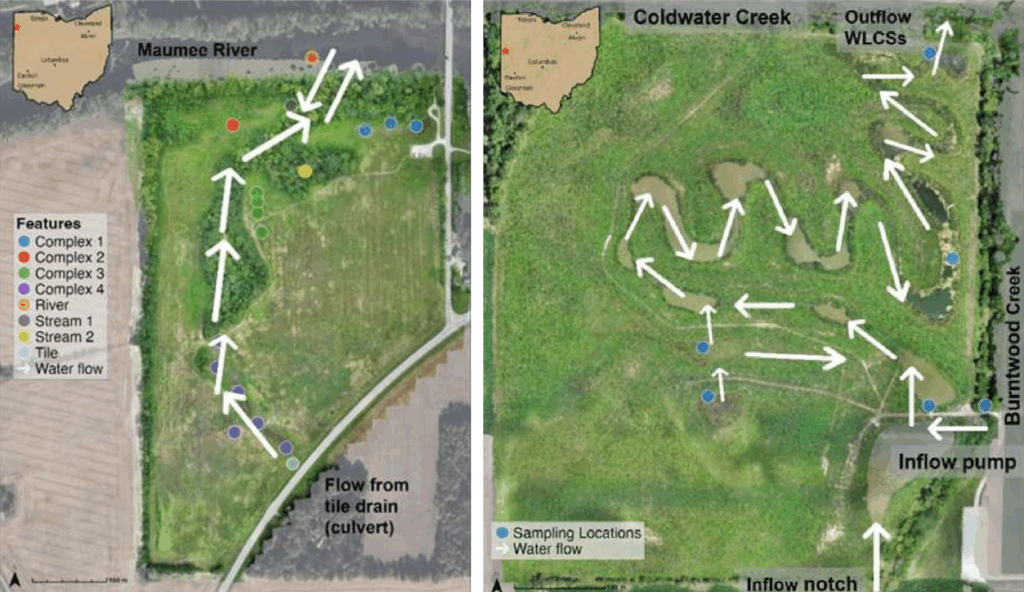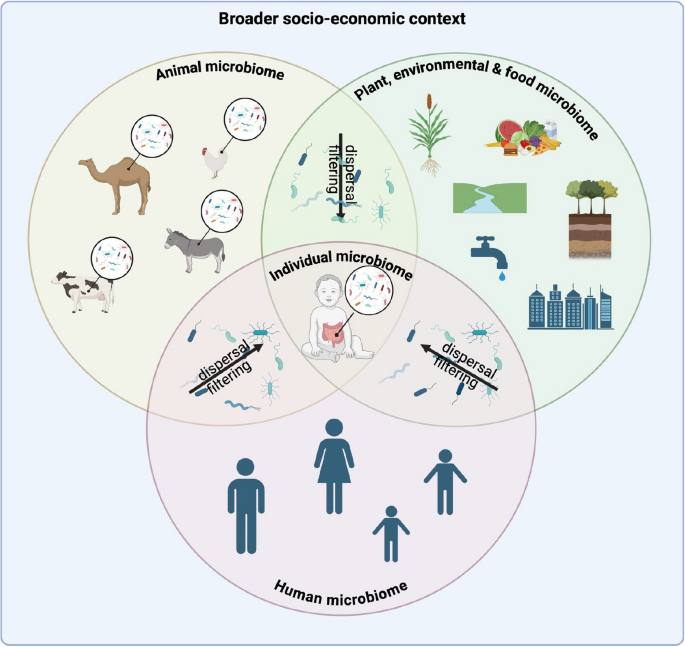Global Forest Assessment: A Contradiction in Progress Towards Sustainable Development Goals
Executive Summary
A 2025 assessment of global forests reveals a significant paradox hindering the achievement of the Sustainable Development Goals (SDGs), particularly SDG 15 (Life on Land) and SDG 13 (Climate Action). While tropical forest regeneration shows promising gains, persistent high rates of deforestation, driven primarily by agriculture, negate this progress. The world remains critically off track in meeting the 2030 target to halt deforestation, jeopardizing global biodiversity, climate stability, and sustainable land use objectives.
I. Status of Deforestation and Regeneration: A Challenge to SDG 15
A. Conflicting Trends in Forest Cover
The global forest landscape presents two opposing narratives that directly impact the viability of SDG 15, which aims to protect, restore, and promote the sustainable use of terrestrial ecosystems.
- Positive Indicator (Regeneration): Between 2015 and 2021, over 11 million hectares of tropical moist forest entered a state of natural regrowth. Regional increases were substantial, with Latin America showing a 750% rise and tropical Asia a 450% rise in regeneration.
- Negative Indicator (Deforestation): In 2024, approximately 8.1 million hectares of forest were cleared globally. This rate shows no significant reduction from the start of the decade and places the world 63% off track from the trajectory needed to achieve the zero-deforestation pledge, a key component of SDG Target 15.2.
B. Failure to Meet SDG Target 15.2
The commitment to halt and reverse forest loss by 2030 is severely compromised. The current trajectory indicates a substantial failure to meet this goal.
- Required Pace vs. Reality: To align with the 2030 goal, annual deforestation should have decreased to 5 million hectares by 2024. The actual figure of over 8 million hectares demonstrates a critical implementation gap.
- The Paradox of Regrowth: Increased regeneration is often a direct consequence of increased forest loss. As lead author Erin Matson noted, “Tropical forests wouldn’t be regrowing if they weren’t cleared in the first place.” This cycle of destruction and temporary recovery undermines genuine progress towards sustainable forest management.
II. Primary Drivers and Impacts on Climate and Biodiversity (SDG 13 & SDG 15.5)
A. Agricultural Expansion and Economic Incentives
The primary drivers of deforestation are fundamentally at odds with multiple SDGs, including SDG 2 (Zero Hunger), SDG 12 (Responsible Consumption and Production), and SDG 13 (Climate Action).
- Dominance of Agriculture: Agriculture is responsible for 86% of global deforestation, with cattle pasture, oil palm, and rubber plantations being major contributors.
- Financial Imbalance: Efforts to protect forests are vastly underfunded. Public finance for forest protection averages $5.9 billion annually, whereas subsidies supporting industrial agriculture amount to $409 billion per year. This disparity creates a powerful economic incentive for forest clearance over conservation.
B. Consequences for Climate and Biodiversity
The loss of primary forests has severe consequences for global climate regulation and biodiversity, directly impacting SDG 13 and SDG Target 15.5 (halt biodiversity loss).
- Carbon Emissions: In 2024, the loss of 6.7 million hectares of primary forest released 3.1 billion metric tons of CO2 equivalents, a figure 150% greater than the annual emissions of the U.S. energy sector. This turns critical carbon sinks into major emission sources.
- Biodiversity Loss: Within Key Biodiversity Areas, tree-cover loss increased by 47% from 2023, accelerating the degradation of critical habitats and threatening countless species.
- Climate-Induced Degradation: Climate change exacerbates forest loss. During the 2023-24 El Niño, the Amazon recorded nearly 150,000 forest fires monthly, turning large areas into net carbon emitters.
III. The Potential of Natural Regeneration and Path Forward
A. The Untapped Potential of Secondary Forests
Natural regeneration offers a cost-effective and scalable solution for climate mitigation and ecosystem restoration, aligning with the UN Decade on Ecosystem Restoration and SDG 15.
- Carbon Sequestration Efficiency: Young secondary forests (20-40 years old) sequester carbon at their highest rates. Protecting these regenerating areas can deliver up to eight times more carbon benefit per hectare than afforestation efforts.
- Vulnerability of Regrowth: Over half of the 51 million hectares of tropical forest that have regenerated since 1990 are located in high-pressure deforestation zones. Between 2015 and 2023, 260,000 hectares of this secondary growth were cleared again, highlighting the fragility of these gains.
B. Conclusion and Recommendations
The current oscillation between forest loss and regrowth represents a net loss of ecological integrity and a failure to advance the 2030 Agenda. Achieving SDG 13 and SDG 15 requires a paradigm shift away from a cycle of destruction and temporary recovery. Key actions must include:
- Realigning Financial Incentives: Drastically reducing subsidies for deforestation-linked agriculture and increasing investment in forest protection and sustainable land management by an estimated twentyfold.
- Protecting Secondary Forests: Prioritizing the protection of naturally regenerating forests as a critical, low-cost strategy for carbon sequestration and biodiversity recovery.
- Strengthening Global Partnerships (SDG 17): Enforcing corporate and national zero-deforestation commitments with robust monitoring and accountability to halt the expansion of agriculture into primary forests.
Analysis of Sustainable Development Goals in the Article
-
Which SDGs are addressed or connected to the issues highlighted in the article?
The article primarily addresses two Sustainable Development Goals (SDGs) due to its focus on forests, climate, and biodiversity:
- SDG 15: Life on Land: This is the most central SDG discussed. The article’s entire theme revolves around the state of the world’s forests, covering deforestation, natural regeneration, the loss of primary forests, and the impact on biodiversity. It directly engages with the goal of protecting, restoring, and promoting the sustainable use of terrestrial ecosystems.
- SDG 13: Climate Action: The article explicitly links forest health to climate change. It highlights how forests act as crucial carbon stores and how their destruction turns them into major sources of emissions. The text mentions that fires in the Amazon “emitted more greenhouse gases than some industrialized nations” and that the loss of primary forests released “3.1 billion metric tons of carbon dioxide equivalents,” directly connecting deforestation to the urgent need for climate action.
-
What specific targets under those SDGs can be identified based on the article’s content?
Several specific targets under SDG 15 and SDG 13 are clearly identifiable from the article’s discussion:
- Target 15.2: By 2020, promote the implementation of sustainable management of all types of forests, halt deforestation, restore degraded forests and substantially increase afforestation and reforestation globally. The article is fundamentally an assessment of this target. It directly references the global pledge of “zero deforestation by 2030” and concludes that the world is “63% off track” from the required trajectory, with deforestation remaining stubbornly high at around 8.1 million hectares in 2024. It also discusses forest regeneration, which relates to the restoration and reforestation aspects of this target.
- Target 15.5: Take urgent and significant action to reduce the degradation of natural habitats, halt the loss of biodiversity and, by 2020, protect and prevent the extinction of threatened species. The article supports this by highlighting the rapid disappearance of “Primary forests, rich in carbon and biodiversity.” It provides a stark statistic that “tree-cover loss within Key Biodiversity Areas rose 47% from 2023,” indicating a failure to protect the most critical habitats for biodiversity.
- Target 13.2: Integrate climate change measures into national policies, strategies and planning. While the article doesn’t discuss specific national policies, it underscores the failure to integrate forest protection as a key climate change measure. The massive carbon emissions resulting from deforestation and fires—turning “one of Earth’s greatest carbon stores into a source of emissions”—demonstrate a disconnect between forest management and climate goals, which this target aims to address.
-
Are there any indicators mentioned or implied in the article that can be used to measure progress towards the identified targets?
Yes, the article is rich with quantitative data that serve as direct or implied indicators for measuring progress (or lack thereof) towards the identified targets.
- Annual rate of deforestation: This is a primary indicator for Target 15.2. The article states that in 2024, “roughly 8.1 million hectares of forest were cleared worldwide,” providing a clear metric of ongoing forest loss.
- Area of forest under regeneration: This indicator measures the restoration aspect of Target 15.2. The article notes that “More than 11 million hectares of tropical moist forest… were in some stage of natural regrowth between 2015 and 2021.”
- Progress towards deforestation goals: The article provides a specific progress indicator by stating the world is “63% off track from the trajectory needed to reach the pledge of ‘zero deforestation by 2030’.”
- Rate of primary forest loss: This is a crucial indicator for both biodiversity (Target 15.5) and climate (Target 13.2). The article specifies that “Some 6.7 million hectares [of primary forest] were lost in 2024.”
- Greenhouse gas emissions from forest loss: This directly measures the climate impact related to Target 13.2. The article quantifies this by stating that primary forest loss released “3.1 billion metric tons of carbon dioxide equivalents.”
- Tree-cover loss in Key Biodiversity Areas: This is a direct indicator for Target 15.5. The article reports that this loss “rose 47% from 2023,” measuring the increasing pressure on critical habitats.
- Financial flows for forest protection: This serves as an indicator of commitment and implementation. The article implies a major barrier by contrasting the “$5.9 billion a year” for forest protection with the “$409 billion in annual subsidies” for industrial agriculture, a primary driver of deforestation.
-
Create a table with three columns titled ‘SDGs, Targets and Indicators” to present the findings from analyzing the article. In this table, list the Sustainable Development Goals (SDGs), their corresponding targets, and the specific indicators identified in the article.
SDGs Targets Indicators SDG 15: Life on Land Target 15.2: Halt deforestation and restore degraded forests. - Annual deforestation rate (8.1 million hectares in 2024).
- Area of forest regeneration (11 million hectares between 2015-2021).
- Progress towards 2030 goal (63% off track).
- Rate of primary forest loss (6.7 million hectares in 2024).
SDG 15: Life on Land Target 15.5: Halt biodiversity loss. - Tree-cover loss within Key Biodiversity Areas (rose 47% from 2023).
SDG 13: Climate Action Target 13.2: Integrate climate change measures into policies. - Greenhouse gas emissions from primary forest loss (3.1 billion metric tons of CO2 equivalents in 2024).
- Emissions from forest fires (described as more than some industrialized nations).
Source: news.mongabay.com






